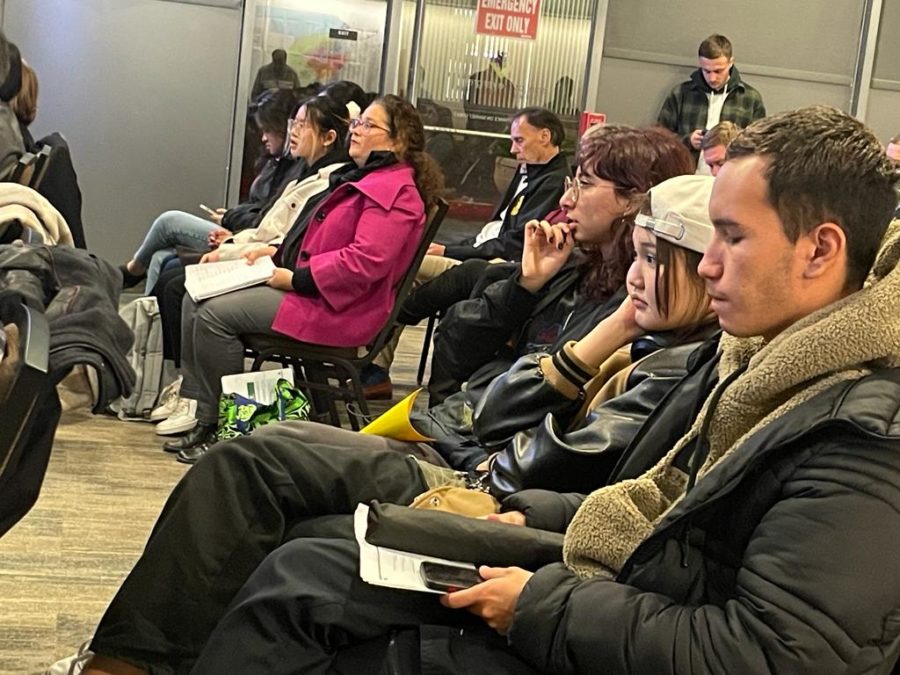By Vinita Nelson
Contributor
Two months into fall semester and some students at San Jose City College still have not received their full financial aid.
“A classmate of mine showed up to a study group with an empty study guide and was asking me if I had the answers. At first I was irritated, but then he explained that he didn’t have the textbooks because he hadn’t received his financial aid,” said Leeta-Rose Ballester, a journalism major at San Jose City College.
The final state budget for 2011 contained $1.7 billion in cuts from higher education. The cuts included cuts to the University of California and California State University systems as well as $400 million from California’s Community Colleges.
In a survey conducted by the Pearson Institute in March, 33 percent of California community college students faced difficulty enrolling in classes in the fall 2010 semester, compared with 17 percent of students in the rest of the U.S.
Governor Brown’s budget contains $10.5 billion for higher education in 2010-11 to educate 1.7 million students, and a comparable $9.2 billion to incarcerate 170,000 inmates, according to The New York Times.
California taxpayers may well ask which is the better investment?
California spends an average of about $55,000 per year to incarcerate a criminal.
“I hope that when the economy gets bad, people will take a second look at their priorities and question if that’s how they want to spend their money,” said Nicole Isger, a defense attorney, and a former prosecutor.
When a young person goes to prison for life, taxpayers pay a hefty price.
While the comparison between higher education and prison budgets may sound to some as apples and oranges, it is not.
“Politicians are unwilling to invest in academia because of its 20 year payoff,” said professor Dona Nichols, a journalism professor at San Jose State University. “Schwarzenegger pulled money out of the CSU system to provide prison guards with a new contract which raised their salaries higher than tenured professors, even though the minimum education for a prison guard is a high-school diploma,” Nichols said.
The Census Bureau has released statistics, which proves the substantial value of a college education in the United States. People who have a bachelor’s degrees earn an average of $51,206 a year, while those with a high school diploma earn $27,915.
Compare those numbers to the $55,000 a year that taxpayers spend on incarcerating prisoners without a return on investment and the question of “Who benefits from the high incarceration rates?” comes to mind.
As in the case of the Watergate scandal, where Deepthroat advised Bob Woodward to “follow the money,” the same principle can be applied to find out who benefits from California’s bulging prison budget. The California Correctional Peace Officers Association promotes tough anti crime policies even when there is research, as cited by Joel Dyer in his book “The Perpetual Prison Machine,” shows that there is no correlation between incarceration rates and crime rates.
The California’s Prison Guards Union represents 32,000 prison guards and is a big fraction of the prison budget, about 70 percent, whereas only 5 percent goes toward vocational programs and education for the inmates. According to San Diego Union-Tribune, in 2006 the average salary for a prison guard, with a minimum of a high school diploma is $57,000, not including pensions and benefits.
The union collects $23 million a year from its members. According to California attorney Tim Kowal, the union “allocates approximately $8 million to lobbying.”
Theresa Vallez works in the Chowchilla prison as a Licensed Psychiatric Technician. Her main priority is to stay safe and to leave the “work here at the prison behind the gates where it belongs”. One of the incidents that stays with her is when an inmate threw a liquid substance at her, which analysis showed was urine.
If incarceration or the threat of incarceration was a deterrent, the 68% recidivism rate that exists in California contradicts that hypothesis.
About a third of the inmates are either parolees committing new crimes or are imprisoned as a result of parole violations.
Barry Krisberg, a senior fellow and lecturer, at UC Berkeley’s Law center for Criminal Justice says that a big factor to reduce recidivism is employment which is related to literacy. Research indicates that California inmates who spend more time in rehabilitative programs are less likely to return to prison or participate in prison violence.
Despite the evidence, California plans budget cuts to literacy and rehabilitative programs as reported by the Sacramento Bee.
The Department of Corrections and Rehabilitation is cutting 45 percent or $250 million of the $560 million it was to spend on rehabilitation this fiscal year. That results in a 30 percent reduction in high school equivalency and other literacy and vocational courses. About 800 out of 1,500 instructors have been laid off. There will also be a 40 percent cut in substance-abuse programs.
Approximately 15 percent of all inmates are in prison for drug-related offenses. The Legislative Analyst’s Office suggests community based diversion programs, in-prison and parolee programs to reduce recidivism in drugs cases which in turn reduces recidivism and prison costs.
The Substance Abuse and Crime Prevention Act of 2000 changed state law so that some adult offenders who use or possess illegal drugs are sentenced to drug treatment programs and supervision in the community rather than being incarcerated. Studies have shown that taxpayers save about $2.50 for every $1 spent on those types of programs.
California is thought of as a bastion of liberalism and innovation in private enterprise, but those values have not breached the barriers of campaign financing and cronyism as it relates to the California prison system.
When funding the prison system, data is ignored in favor of self-interest and the collusion between politicians and the prison guards unions has resulted in California taxpayers juggling the increasing costs of higher education along with the cost of maintaining the fifth highest incarceration rate and the largest prison system in the US.






